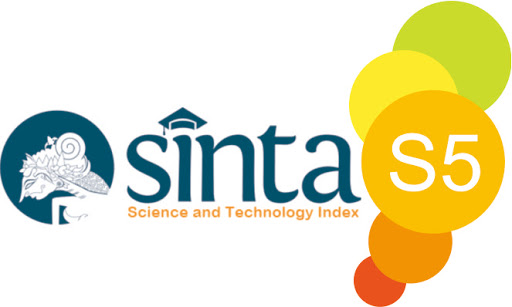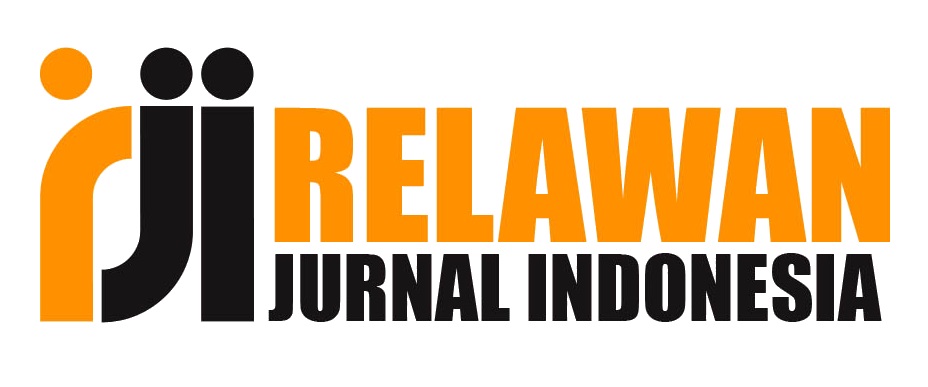Creative Teaching Strategies and Student Engagement in a Rural Indonesian EFL Classroom: A Case Study from Sumbawa
DOI:
https://doi.org/10.57176/jn.v5i1.187Keywords:
creative teaching strategies, efl classroom, rural context, student engagamentAbstract
Penelitian ini bertujuan untuk mengkaji strategi pengajaran kreatif yang diterapkan oleh guru bahasa Inggris dan dampaknya terhadap keterlibatan siswa di SMP Negeri 2 Utan, Kabupaten Sumbawa. Fokus utama adalah untuk mengidentifikasi bagaimana berbagai strategi seperti pujian, permainan edukatif, aktivitas awal pembelajaran, penggunaan musik, dan tugas kelompok mempengaruhi keterlibatan siswa dalam tiga dimensi: afektif, kognitif, dan perilaku. Penelitian ini menggunakan pendekatan kualitatif dengan desainstudi kasus. Data dikumpulkan melalui observasi kelas, wawancara mendalam dengan guru dan siswa, serta kuesioner terbuka. Teknik triangulasi digunakan untuk memastikan validitas data. Hasil penelitian menunjukkan bahwa strategi pengajaran kreatif guru berdampak positif terhadap keterlibatan siswa. Pujian membangun kepercayaan diri siswa, permainan edukatif dan musik menciptakan suasana belajar yang menyenangkan, dan tugas kelompok meningkatkan kolaborasi. Keterlibatan afektif siswa tercermin dari antusiasme dan rasa senang saat belajar, keterlibatan kognitif tampak dari peningkatan pemahaman melalui interaksi dan diskusi, sedangkan keterlibatan perilaku ditunjukkan melalui keaktifan siswa dalam menjawab dan berpartisipasi dalam kegiatan kelas. Namun demikian, ditemukan pula hambatan eksternal, terutama kondisi sosial ekonomi siswa yang mengharuskan mereka membantu orang tua bekerja, sehingga mengganggu kehadiran dan konsistensi keterlibatan belajar. Penelitian ini menekankan pentingnya strategi pengajaran yang kontekstual dan dukungan lingkungan belajar yang holistik, termasuk keterlibatan orang tua.
__________________________________________________________________________________
This study aims to examine the creative teaching strategies implemented by English teachers and their impact on student engagement at SMP Negeri 2 Utan, Sumbawa Regency. The main focus of this study is to identify how various strategies, such as praise, educational games, pre-learning activities, the use of music, and group assignments, affect student engagement in three dimensions: affective, cognitive, and behavioral. This study used a qualitative approach with a case study design. Data were collected through classroom observations, in-depth interviews with teachers and students, and open-ended questionnaires. Triangulation techniques were used to ensure data validity. The results showed that teachers' creative teaching strategies had a positive impact on student engagement. Praise built students' self-confidence, educational games and music create a pleasant learning atmosphere, and group assignments enhance collaboration. Students' affective engagement is reflected in enthusiasm and enjoyment while learning, cognitive engagement is seen in increased understanding through interaction and discussion, while behavioral engagement is demonstrated through students' activeness in answering and participating in class activities. However, external obstacles were also found, particularly students' socioeconomic conditions that require them to help their parents work, thus disrupting attendance and consistent learning engagement. This research emphasizes the importance of contextual teaching strategies and holistic learning environment support, including parental involvement.
References
Alizadeh m-alizadeh, M. (2024). Exploring Engagement and Perceived Learning Outcomes in an Immersive Flipped Learning Context. International Journal in Information Technology in Governance, Education and Business, 6(2), 1–14. https://www.gather.town/
Almukhaild, H. (2020). Review of Engaging language learners in contemporary classrooms; Authors: Sarah Mercer, Zoltán Dörnyei; Publisher: Cambridge University Press, 2020; ISBN: 9781108445924; Pages: 208. Studies in Second Language Learning and Teaching, 10(4), 813–818. https://doi.org/10.14746/ssllt.2020.10.4.8
Bronfenbrenner, U. (1979). The ecology of human development: Experiments by nature and design. Harvard University Press.
Craft, A. (2005). Creativity in schools: Tensions and dilemmas. Routledge.
Creswell, J. W. (2012). Educational research: Planning, conducting, and evaluating quantitative and qualitative research (4th ed.). Pearson.
Fredricks, J. A., Blumenfeld, P. C., & Paris, A. H. (2004). School engagement: Potential of the concept, state of the evidence. Review of Educational Research, 74(1), 59–109. https://doi.org/10.3102/00346543074001059
Gardner, H. (1983). Frames of mind: The theory of multiple intelligences. Basic Books.
Guest, G., MacQueen, K., & Namey, E. (2014). Introduction to Applied Thematic Analysis. Applied Thematic Analysis, 3–20. https://doi.org/10.4135/9781483384436.n1
Jack, E., Alexander, C., & Jones, E. M. (2025). Exploring the impact of gamification on engagement in a statistics classroom. Teaching Mathematics and Its Applications, 44(1), 93–106. https://doi.org/10.1093/teamat/hrae009
Krashen, S. D. (1982). Principles and practice in second language acquisition. Pergamon Press.
Mali, Y. C. G. (2023). A book review: Case study: Case study research and applications design and methods (6th ed.) by Yin. Beyond Words, 11(1), 61–64. https://doi.org/http://dx.doi.org/10.1563
Masdianti, M. (2021). The Implementation of Teachers’ Humor in The Classroom. Seltics, 4(2), 110–120. https://doi.org/10.46918/seltics.v4i2.1017
Mercer, S. (2016). Positive language education: Dynamic interplay between individuals, contexts and methodologies. The European Journal of Applied Linguistics and TEFL, 5(2), 41–62.
Mercer, S., & Dörnyei, Z. (2020). Engaging language learners in contemporary classrooms. Language Teaching, 53(4), 427–443. https://doi.org/10.1017/S0261444819000222
Mercer, S. (2018). Psychology for language learning: Spare a thought for the teacher. Language Teaching, 51(4), 504–525. https://doi.org/10.1017/S0261444817000258
Palincsar, A. S. (1998). Social constructivist perspectives on teaching and learning. Annual Review of Psychology, 49, 345–375. https://doi.org/10.1146/annurev.psych.49.1.345
Pasutri, N. S., & Yeni, M. (2022). Rural EFL Teacher’s Challenges in Improving Students’ Higher Order Thinking Skills. Asatiza: Jurnal Pendidikan, 3(2), 71–77. https://doi.org/10.46963/asatiza.v3i2.520
Philp, J., & Duchesne, S. (2016). Exploring Engagement in Tasks in the Language Classroom. Annual Review of Applied Linguistics, 36, 50–72. https://doi.org/10.1017/S0267190515000094
Richards, J. C. (2013). Creativity in language teaching. Iranian Journal of Language Teaching Research, 1(3), 19–43. https://doi.org/10.46568/pjass.v13i2.600
Richards, J. C., & Pun, M. (2022). Creativity in language teaching: Perspectives from teachers in Asia. Innovation in Language Learning and Teaching, 16(1), 34–46. https://doi.org/10.1080/17501229.2021.1927852
Rogers, C. R. (1969). Freedom to learn. Merrill.
Rosdiana, I., & Taufiqulloh, T. (2025). Exploring Undergraduate Students’ Perceptions of Efl Speaking Classes: Insights From Six Dimensions in Indonesian Higher Education. English Review: Journal of English Education, 13(1), 17–28. https://doi.org/10.25134/erjee.v13i1.11248
Setiawan, B., Rahmawati, N., & Pratama, R. (2019). Student anxiety and disengagement in Indonesian EFL classrooms: Causes and solutions. Indonesian Journal of English Education, 6(1), 1–14. https://doi.org/10.21009/IJEE.061.01
Sugiyono. (2017). Metode penelitian pendidikan: Pendekatan kuantitatif, kualitatif dan R&D. Alfabeta.
Tisdell, S. B. M. & E. J. (2009). Qualitative research: A guide to design and implementation. The JosseyBass Higher and Adult Education Series, 2nd, 304.
UNESCO. (2018). Global education monitoring report: Meeting our commitments to inclusion and equity. United Nations Educational, Scientific and Cultural Organization. https://unesdoc.unesco.org/ark:/48223/pf0000265866
Vygotsky, L. S. (1978). Mind in society: The development of higher psychological processes. Harvard University Press.
Widodo, H. P. (2016). Engaging students in creative writing through local wisdom in rural Indonesia. Asian Englishes, 18(3), 190–206. https://doi.org/10.1080/13488678.2016.1229836
Yin, R. K. (2018). Case study research and applications: Design and methods (6th ed.). Sage Publications.
Yuwono, G. I. (2005). English language education policy in Indonesia: How policy and the implementation reflect the national and local realities. TEFLIN Journal, 16(2), 193–208.
Downloads
Published
How to Cite
Issue
Section
License
Copyright (c) 2025 Masdianti, Muhammad Alifah Ratno, Ahmad Syaekhu, Arif Maulana

This work is licensed under a Creative Commons Attribution-ShareAlike 4.0 International License.
You are free to:
- Share — copy and redistribute the material in any medium or format for any purpose, even commercially.
- Adapt — remix, transform, and build upon the material for any purpose, even commercially.
- The licensor cannot revoke these freedoms as long as you follow the license terms.
Under the following terms:
- Attribution — You must give appropriate credit , provide a link to the license, and indicate if changes were made . You may do so in any reasonable manner, but not in any way that suggests the licensor endorses you or your use.
- ShareAlike — If you remix, transform, or build upon the material, you must distribute your contributions under the same license as the original.
- No additional restrictions — You may not apply legal terms or technological measures that legally restrict others from doing anything the license permits.
Notices:
You do not have to comply with the license for elements of the material in the public domain or where your use is permitted by an applicable exception or limitation .
No warranties are given. The license may not give you all of the permissions necessary for your intended use. For example, other rights such as publicity, privacy, or moral rights may limit how you use the material.
















